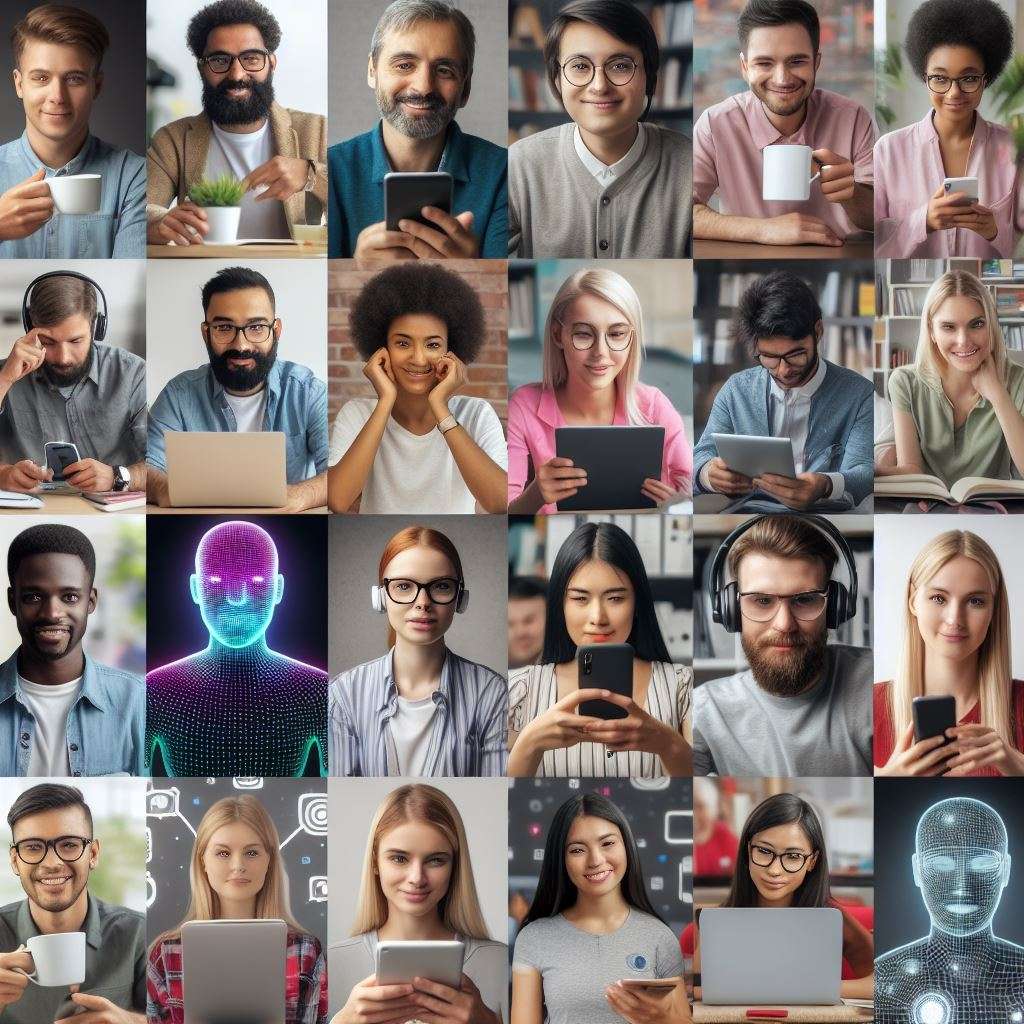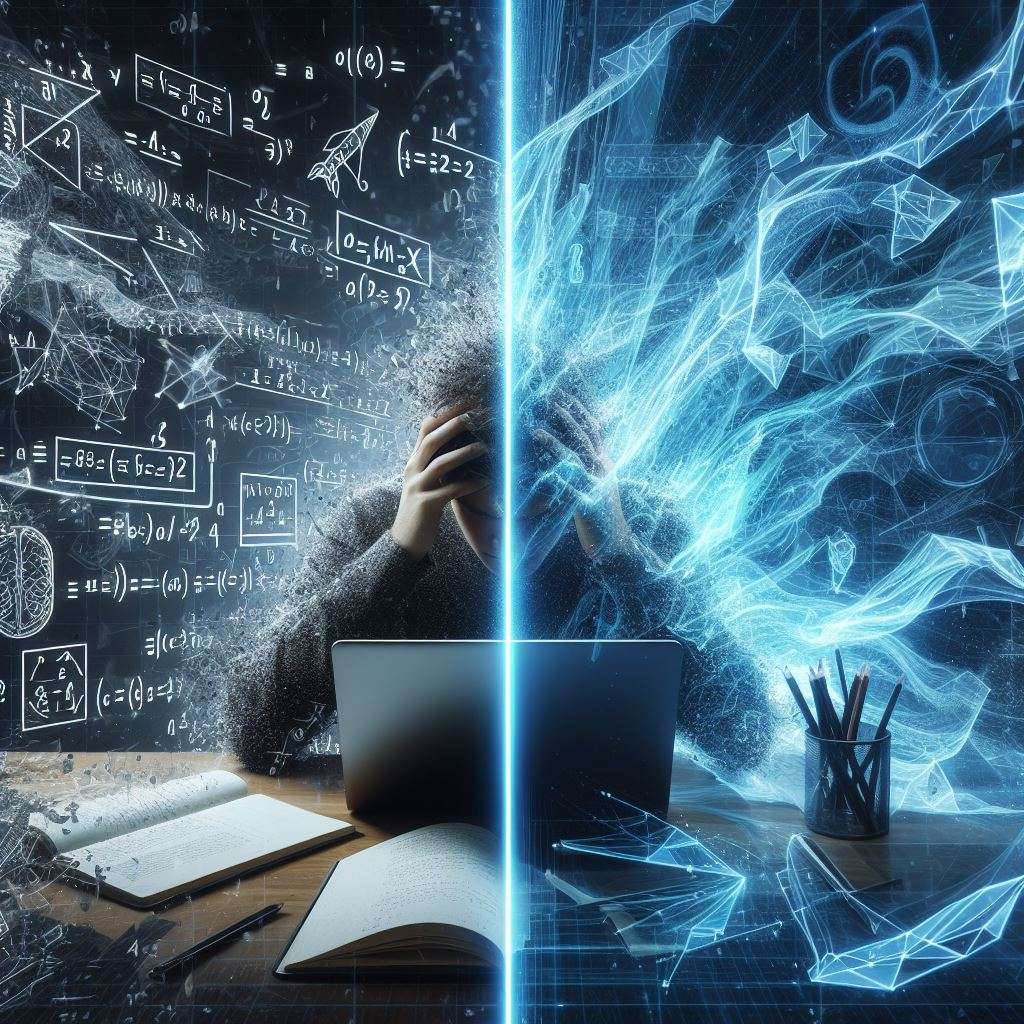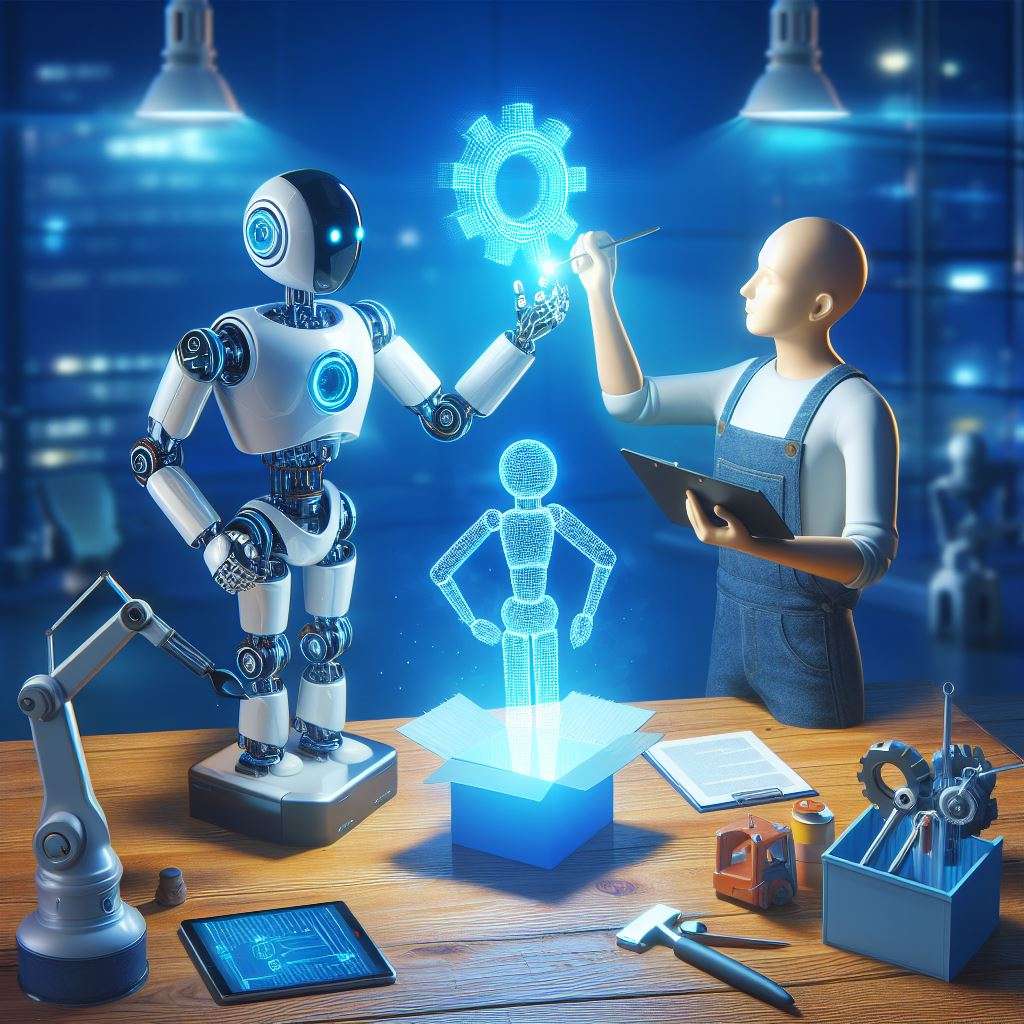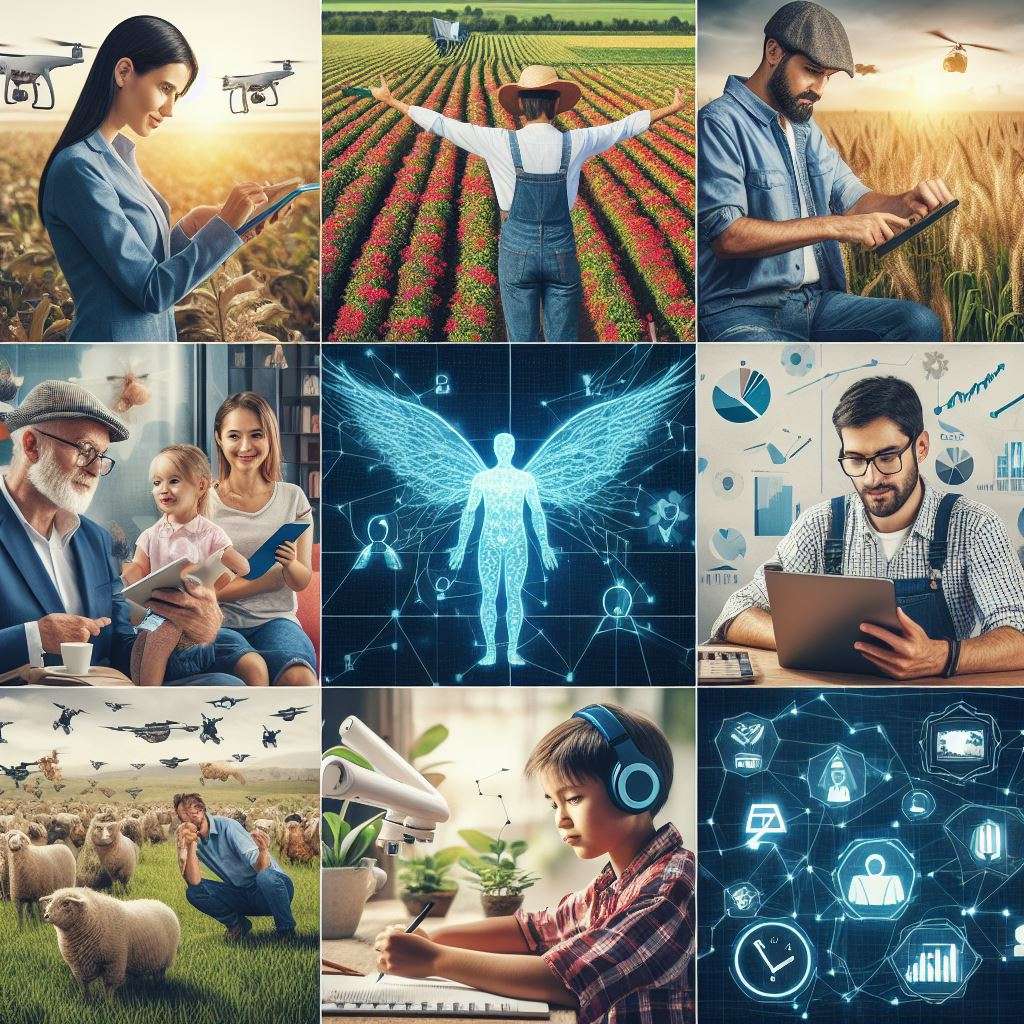Imagine a world where you can access cutting-edge AI tools and resources with just a few clicks, where you can use AI to solve some of the most pressing problems facing humanity, where you can understand how AI works and collaborate with it effectively, and where you can shape the future of AI responsibly and ethically. Sounds too good to be true? Well, this is not a distant utopia, but a reality that is unfolding right before our eyes. Welcome to the AI revolution.
The AI revolution is the phenomenon of AI becoming more pervasive, powerful, and impactful in every aspect of life. From business to education, from healthcare to entertainment, from agriculture to environment, AI is transforming the way we live, work, and play. But what are the top trends and innovations that are driving this revolution? And how can we navigate this rapidly changing landscape and harness the potential of AI for good? In this article, we will explore these questions and more, as we take a closer look at some of the most exciting developments in the AI field.
Democratization of AI
One of the key trends that is shaping the AI revolution is the democratization of AI. This means that AI tools and resources are becoming more accessible and affordable to individuals and businesses of all sizes and backgrounds. No longer is AI the exclusive domain of large corporations, research institutions, or government agencies. Anyone with an internet connection and a device can tap into the power of AI and use it for their purposes.
One of the factors that is enabling the democratization of AI is the rise of low-code/no-code AI platforms. These are platforms that allow users to create, deploy, and manage AI applications without writing any code or having any technical expertise. Users can simply drag and drop pre-built components, use natural language interfaces, or leverage existing data and models to build their own AI solutions. Some examples of low-code/no-code AI platforms are Microsoft Power Platform, Google Cloud AutoML, and IBM Watson Studio.
Another factor that is facilitating the democratization of AI is the emergence of user-friendly interfaces. These interfaces make AI more intuitive, interactive, and engaging for users. Users can communicate with AI using voice, text, gestures, or images, and receive personalized and contextual feedback. Some examples of user-friendly interfaces are Amazon Alexa, Google Assistant, and Apple Siri.

The democratization of AI heralds numerous societal advantages by empowering individuals and communities to address their unique challenges. Beyond problem-solving, it acts as a catalyst for innovation and creativity, breaking down barriers and reducing inequalities. This widening access creates a ripple effect, offering new opportunities for education, employment, and entrepreneurship. Moreover, it stimulates the emergence of fresh markets and industries, diversifying economic landscapes. By putting AI tools in the hands of a broader population, the democratization of AI not only amplifies individual capabilities but also lays the groundwork for a more inclusive, dynamic, and equitable socio-economic framework with wide-ranging positive implications.
AI for Social Good
Another trend that is defining the AI revolution is the use of AI for social good. This means that AI is being used to tackle some of the most challenging and complex issues facing the world today, such as climate change, poverty, and healthcare. AI can help us understand these problems better, find effective solutions, and monitor and evaluate the impact of our actions.
One of the areas where AI is making a positive difference is renewable energy. AI can help us optimize the generation, distribution, and consumption of clean energy sources, such as solar, wind, and hydro. AI can also help us reduce greenhouse gas emissions, improve energy efficiency, and enhance grid reliability and resilience. Some examples of AI-powered solutions in renewable energy are DeepMind’s AI system that reduced Google’s data center cooling bill by 40%, IBM’s Hybrid Renewable Energy Forecasting system that improved wind and solar power prediction by 30%, and Microsoft’s AI for Earth program that supported over 500 projects in 81 countries to advance environmental sustainability.
Another area where AI is having a positive impact is disaster prediction and response. AI can help us anticipate, prepare for, and mitigate the effects of natural and man-made disasters, such as earthquakes, floods, fires, and cyberattacks. AI can also help us coordinate and deliver humanitarian aid, rescue and relief operations, and recovery and reconstruction efforts. Some examples of AI-powered solutions in disaster prediction and response are Google’s Crisis Response team which provides critical information and resources to people affected by disasters, Facebook’s Disaster Maps which shares aggregated and anonymized location data to help responders reach people in need, and IBM’s Call for Code initiative that awarded over $10 million to developers who created innovative solutions for disaster relief.

AI can also help us tailor medical interventions to the specific needs and preferences of each patient, taking into account their genetic, environmental, and lifestyle factors. Some examples of AI-powered solutions in personalized medicine are Google’s DeepMind Health which developed an AI system that can detect eye diseases with 94% accuracy, and IBM’s Watson Health which created an AI system that can recommend cancer treatments based on the patient’s medical records and the latest research, and Microsoft’s Project Hanover that used AI to identify the most effective drug combinations for leukemia patients.
The Rise of Explainable AI (XAI)
A third trend that is influencing the AI revolution is the rise of explainable AI (XAI). This means that AI systems are becoming more transparent and interpretable for humans. This is important because as AI becomes more ubiquitous and powerful, we need to be able to understand how it works, why it makes certain decisions, and what are the implications and consequences of its actions.
One of the challenges that is hindering the explainability of AI is the complexity and opacity of some AI models, especially deep neural networks. These are models that consist of multiple layers of interconnected nodes that process large amounts of data and learn from their own experiences. These models can achieve remarkable results, but they can also be difficult to comprehend and debug, even for experts. This can lead to problems such as bias, error, and uncertainty, which can undermine the trust and confidence of users and stakeholders.
One of the solutions that is addressing this challenge is the development of XAI techniques. These are techniques that aim to make AI models more understandable and accountable for humans. These techniques can be classified into two categories: model-agnostic and model-specific. Model-agnostic techniques are techniques that can be applied to any type of AI model, regardless of its architecture or algorithm. These techniques include methods such as feature importance, partial dependence plots, and local interpretable model-agnostic explanations (LIME). Model-specific techniques are techniques that are tailored to a specific type of AI model, taking advantage of its structure or properties. These techniques include methods such as layer-wise relevance propagation, attention mechanisms, and network dissection.
The rise of XAI has many benefits for society. It can enhance the reliability and robustness of AI systems, improve communication and collaboration between humans and AI, and foster the ethical and responsible use of AI.
Human-AI Collaboration
A fourth trend that is shaping the AI revolution is human-AI collaboration. This means that humans and AI work together in a synergistic and complementary way, leveraging the strengths and compensating for the weaknesses of each other. This is essential because as AI becomes more capable and autonomous, we need to ensure that it aligns with our goals, values, and preferences and that it supports and empowers us, rather than replaces or harms us.
One of the aspects that is enabling the human-AI collaboration is the augmentation of human capabilities and decision-making. AI can help us enhance our cognitive, physical, and emotional abilities, as well as our creativity and productivity. AI can also help us make better and faster decisions, by providing us with relevant information, insights, and recommendations. Some examples of AI-powered augmentation are Google’s Smart Compose which helps users write emails faster and easier, Microsoft’s Seeing AI which helps visually impaired people navigate their surroundings, and Spotify’s Discover Weekly which helps users discover new music based on their preferences.
Another aspect that facilitates human-AI collaboration is the coordination and cooperation of human and AI agents. AI can help us coordinate and cooperate with other humans and AI agents, by facilitating communication, negotiation, and coordination. AI can also help us achieve common goals and outcomes, by providing feedback, guidance, and incentives. Some examples of AI-powered coordination and cooperation are Google’s Duplex which helps users book appointments and make reservations, IBM’s Project Debater which helps users engage in constructive debates, and OpenAI’s Dota 2 which helps users play and learn from a team of AI agents.

The synergy between humans and artificial intelligence (AI) holds immense societal benefits. Enhancing work and daily life, AI improves efficiency and quality, allowing individuals to focus on creative endeavors. This collaboration fosters a more satisfying work-life balance, as AI streamlines tasks and offers personalized assistance. Moreover, the interaction cultivates a culture of continuous learning and innovation, with humans leveraging AI’s analytical capabilities and AI systems adapting from human experiences. The result is a dynamic partnership that not only optimizes productivity and well-being but also propels society toward a future marked by transformative advancements and collective progress.
The Future of AI
The AI revolution is not a static or linear process, but a dynamic and evolving. As AI technology advances and matures, new opportunities and challenges will emerge, and new trends and innovations will arise. The future of AI is not predetermined or inevitable, but dependent on our choices and actions. Therefore, we need to be proactive and responsible in shaping the development and use of AI and ensure that it serves the common good of humanity and the planet.
One of the aspects that we need to consider in the future of AI is the ethical implications of AI. AI can have positive or negative impacts on various ethical dimensions, such as fairness, accountability, privacy, security, and human dignity. We need to ensure that AI systems are aligned with our ethical principles and values and that we have mechanisms to monitor, evaluate, and correct any ethical issues or harms that may arise. We also need to ensure that we have a clear and consistent framework of ethical guidelines and standards that can guide the development and use of AI across different domains and contexts.
Another aspect that we need to consider in the future of AI is the social implications of AI. AI can have positive or negative impacts on various social dimensions, such as employment, education, culture, and democracy. We need to ensure that AI creates more opportunities than challenges for human workers and that we have policies and programs to support the reskilling and upskilling of the workforce. We also need to ensure that AI enhances the quality and accessibility of education and that we have curricula and pedagogies that foster the development of digital literacy and critical thinking skills. We also need to ensure that AI respects and promotes the diversity and inclusion of human cultures and that we have platforms and processes that enable the participation and representation of all voices and perspectives in the public sphere.
The future of AI is not only a matter of technology but also of humanity. It is up to us to decide what kind of future we want to create with AI, and what kind of role we want to play in it. We can be passive observers, active participants, or responsible leaders. We can be fearful, curious, or hopeful. We can be consumers, creators, or innovators. The choice is ours.
Conclusion
The AI revolution is one of the most significant and transformative phenomena of our time. It is changing the way we live, work, and play, and opening up new possibilities and opportunities for us. But it also poses new challenges and risks for us and requires us to be more aware and engaged in shaping its development and use. In this article, we explored some of the top trends and innovations that are driving the AI revolution, such as the democratization of AI, the use of AI for social good, the rise of explainable AI, and human-AI collaboration. We also discussed some of the aspects that we need to consider in the future of AI, such as the ethical and social implications of AI. We hope that this article has given you a glimpse of the AI revolution, and inspired you to join us in navigating and harnessing its potential for good.
